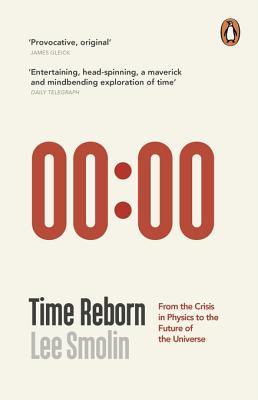More on this book
Kindle Notes & Highlights
by
Lee Smolin
Read between
June 22 - June 22, 2017
All the theories we work with, including the Standard Model of Particle Physics and general relativity, are approximate theories, applying to truncations of nature that include only a subset of the degrees of freedom in the universe. We call such an approximate theory an effective theory.
Simplicity and beauty, then, are the signs not of truth but of a well-constructed approximate model of a limited domain of phenomena9.
The notion of an effective theory implies that progress in physics entails revolutions that completely change the conceptual basis of our understanding of nature while preserving the successes of earlier theories.
In every other example in which a linear equation is used in physics, the theory is known to arise as an approximation to a more fundamental (but still effective) theory that is nonlinear (in the sense that the effects may be proportional to a higher power of the cause), and the best bet is that this will turn out to be true of quantum mechanics as well.
The new theory must be scientific. Genuine explanations show their validity by having myriads of unanticipated consequences. There can be no just making things up because it makes a nice story. A real theory must imply specific testable predictions.
Roberto Mangabeira Unger puts this more elegantly.7 Either time is real or it is not. If time is not real, then laws are timeless — but then the choice of laws is inexplicable, for reasons we have already discussed. If, on the other hand, time is truly real, then nothing, not even the laws, can last forever. If the laws of nature act forever, we are in the Newtonian paradigm, and you could use them to reduce any property of the world at a later time to a property at an earlier time. Or, equivalently, you could replace any physical causation with logical implication. So time being real means
...more
The notion of timeless laws also violates the relational principle that nothing in the universe acts without being acted on. If you choose to except the laws of nature from this principle, seeing them as something outside the universe, you put them outside the realm of rational explanation. To make laws explicable, we must consider them as much a part of the world as the particles they act on. This brings them into the purview of change and causality. They become explicable only when they participate in the dance of change and mutual influence that makes the world a whole.
We can see from this example that entropy is inverse to information.
It will help to have a name for hypothetical universes in which every moment of time and each and every event is unique. We’ll call a universe that satisfies the principle of the identity of the indiscernibles a Leibnizian universe.
This is in stark contrast to the universe envisioned by Ludwig Boltzmann. In that vision of cosmology, most of the universe’s history is dominated by periods of thermal equilibrium, where entropy is maximized and there is no structure or organization. These long deathlike periods are punctuated by relatively short periods in which structure and organization arise due to a statistical fluctuation — and then dissipate, due to the tendency of entropy to increase. We can call such a world a Boltzmannian universe.
In a Boltzmannian universe, there are lots of moments that recur — if not precisely, then to any degree of precision you might want. In an approximate sense, most moments of a Boltzmannian universe are like all the others, because all moments in equilibrium are roughly the same. The bulk quantities, such as temperature and density, that measure averages are uniform. True, the atoms fluctuate around those averages but almost never enough to amount to macroscopic levels of structure and organization. In a Boltzmannian universe, if you wait long enough the universe will come as close as you like
...more
The steady flow of energy through a system can result in complex patterns and structures, evidence that these systems are far from thermodynamic equilibrium. Another example is the wind-created rippling on sand dunes. At the other end of the spectrum of complexity is life. Both, and many things in between, are the result of the steady energy flow through a system. This means, among other things, that complex self-organized systems are never isolated.
Highly complex systems cannot be in equilibrium, because order is not random, so high entropy and high complexity cannot coexist.
So the fact that our universe is interesting has a threefold explanation: The principle of driven self-organization acts over a myriad of subsystems and scales, from the molecular to the galactic, evolving them to states of ever increasing complexity. The engines driving that process are the stars, which exist because of a combination of the fine tuning of the fundamental laws and the anti-thermodynamic nature of gravity. But these forces can produce a universe filled with stars and galaxies only if the initial conditions of the universe are strongly time-asymmetric.
Part of the program of the new philosophy is to save cosmology from an unscientific excursion by recognizing the central role time plays on a cosmological scale. That scientific task has been the focus of this book. But equally important, a civilization whose scientists and philosophers teach that time is an illusion and the future is fixed is unlikely to summon the imaginative power to invent the communion of political organizations, technology, and natural processes — a communion essential if we are to thrive sustainably beyond this century.


